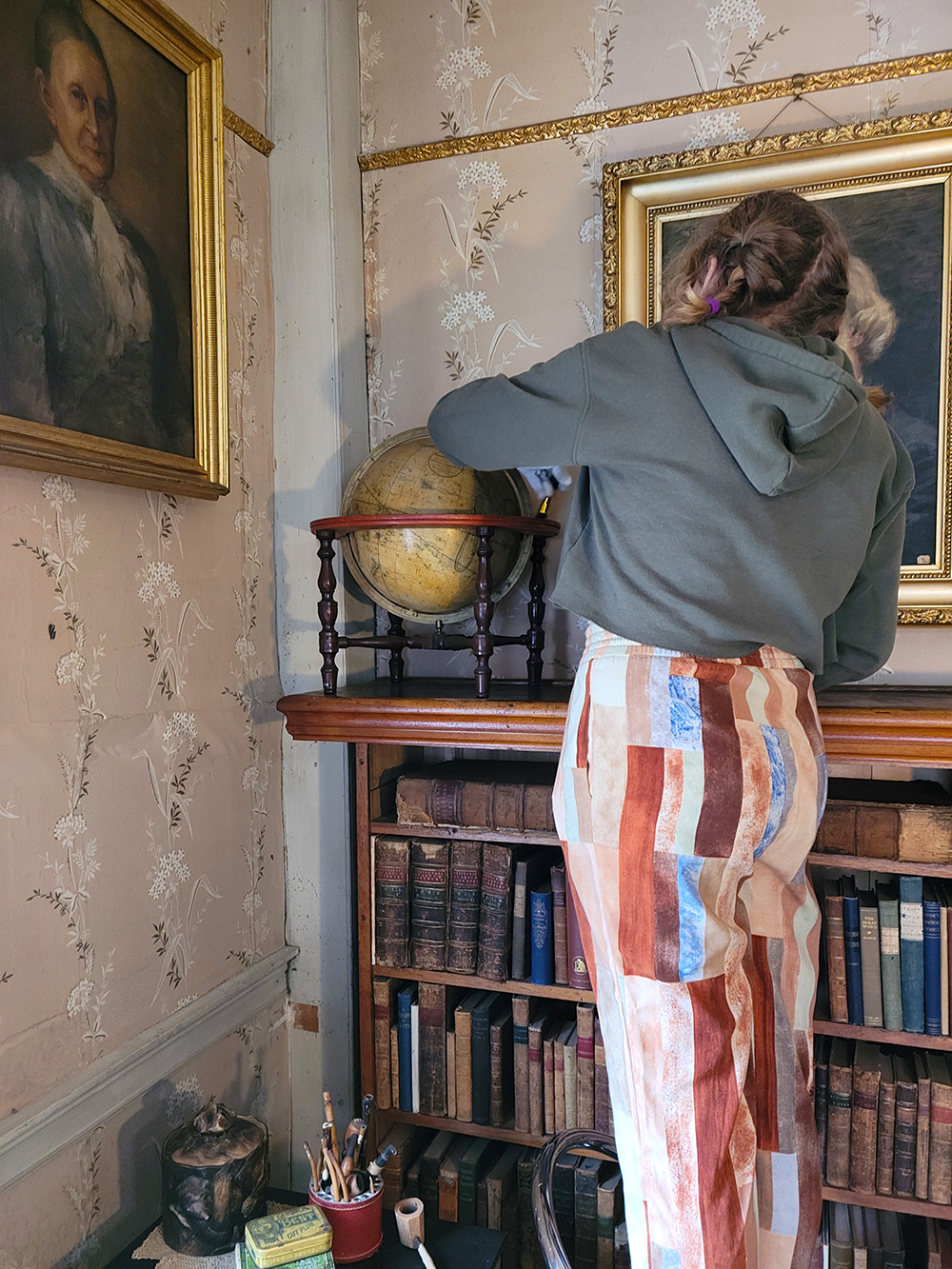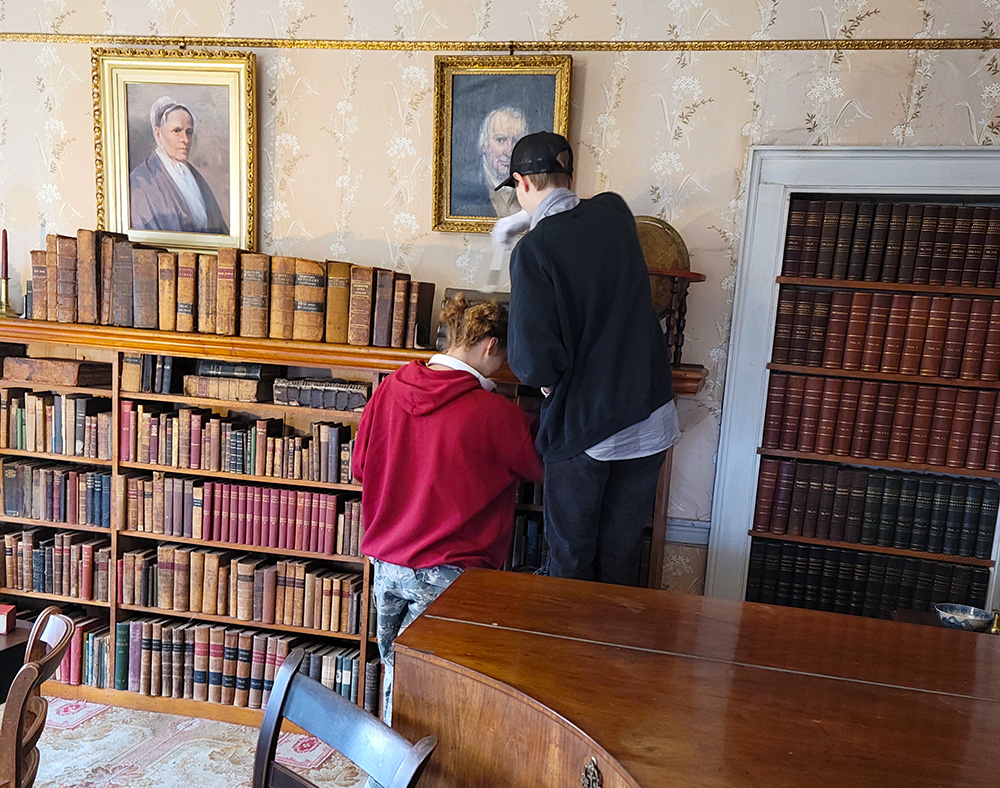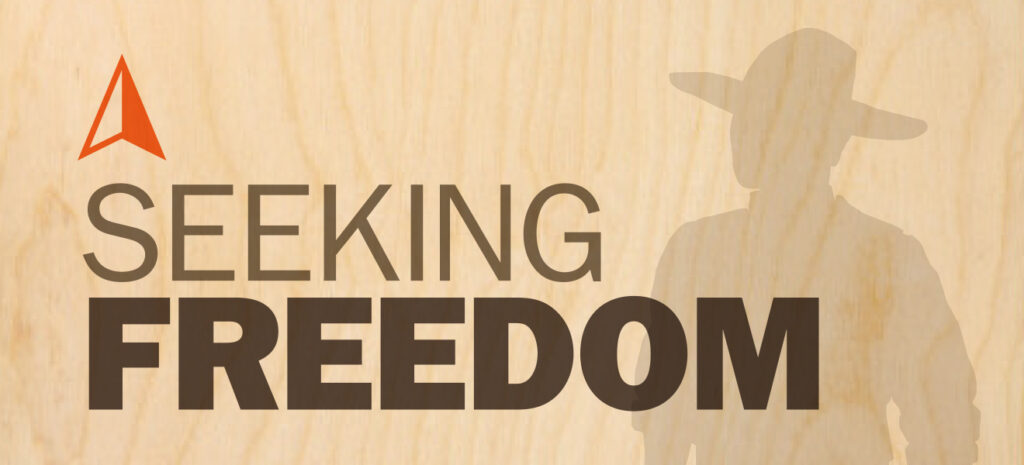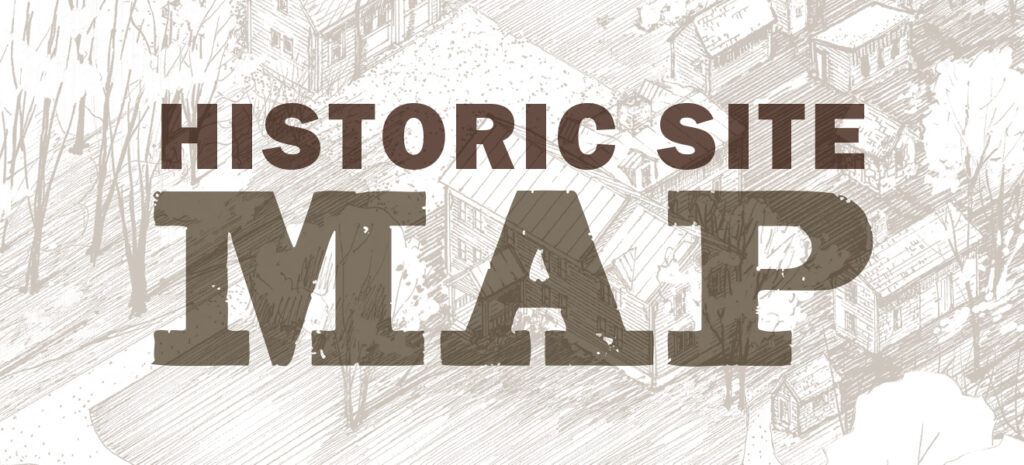Lake Champlain Waldorf School Learns About Museum Collections
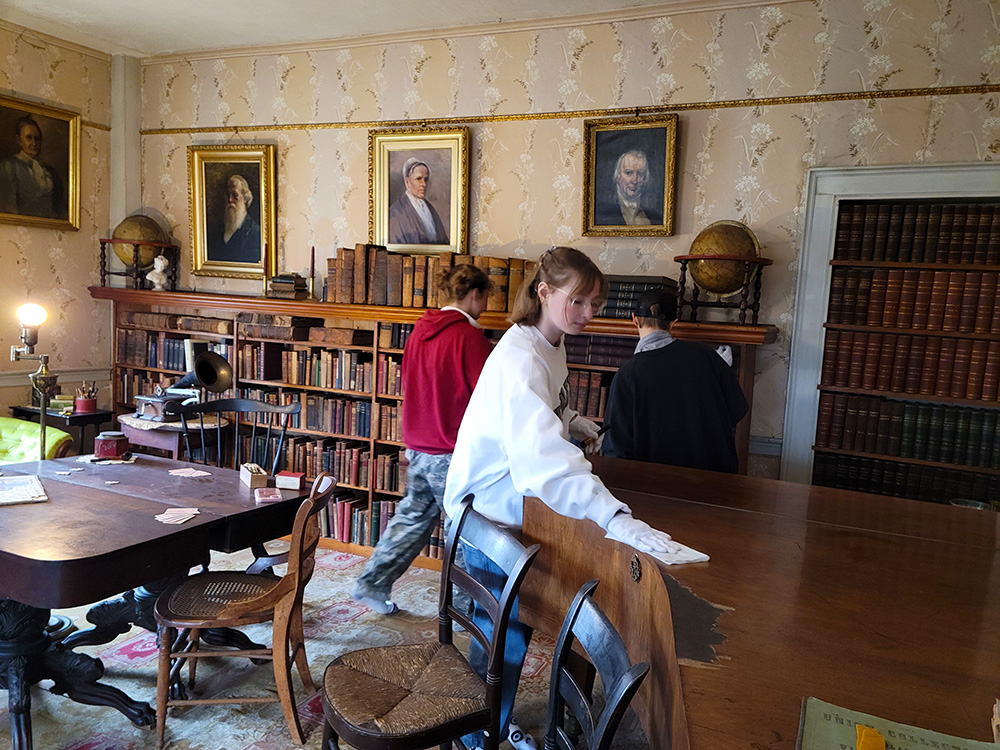
Rokeby Museum hosted 10th graders from the Lake Champlain Waldorf School for a collections care mini-internship. Students were introduced to the methodology of collections work, as well as techniques in proper storage, handling and cleaning. Read some of the student’s reflections below!
What was your favorite object and why?
My favorite collections piece was all the books. I found it interesting how there were books from each generation that lived there, giving a bit of a window into the lives, lifestyles, and the span of time in which they lived at Rokeby. I loved dusting them all to see the titles, some of which I knew, like Alice in Wonderland, Webster’s Dictionary and The Jungle Book alongside some I didn’t recognize and had never heard of before. —Ell
My favorite collection piece was the glazed earthenware. I was drawn to it because of the beautiful patterns that were painted on. A close second is the custom Rokeby butter molds, especially the miniature one. It was really cool to learn about how famous Rokeby butter was and then get to see the molds they used. —Cariah
What do you see as the strengths and challenges of a small museum such as ours?
One of the strengths of being such a small community is that you get the freedom to set up your space and collection how you see fit best for the story you are trying to tell. A challenge of such a small community is that you have a smaller budget for things and you often have to work with what you have and do the best you can when you want to expand or change something about the space. —Ruby
In small museums one of the best things is the ability for the community to participate in helping do things like make suggestions or help them with dusting like we did. It also makes it easier for community outreach with school programs by letting students touch things like the newspaper The Liberator. One of the challenges that became apparent is that it is difficult to keep items in proper storage because it costs so much money. —Alexis
Did you learn something this week that surprised you?
I learned that a lot of objects do not require extensive conservation work to be done in order for them to survive lengthy periods of time, so long as bugs, critters, pests and excessive moisture are kept at bay. It was surprising to see that so many of the books were still legible and had their beautiful bindings and embossings intact. I was also surprised at the nice and tidy state of the surviving textiles such as doilies, curtains and blankets. —Ell
I learned about the day to day lives of the people who once lived there, and it was fascinating to hear about all the ways they were so different and so similar to mine. —Katie
In what ways might you apply this experience, or some part of it, in the future?
I learned the amount of care it takes to upkeep these pieces and how museum curators have so much power in the stories being told. For example, the museum used to be about [Rowland E. Robinson’s] life and now it is also about how the Rokeby Museum was a stop on the Underground Railroad and the importance of that. —Alexsis
I think I will be more excited to go to history museums now that I know how each object tells a story and that historical figures are more interesting than I previously thought. —Cariah
 Rokeby Museum
Rokeby Museum